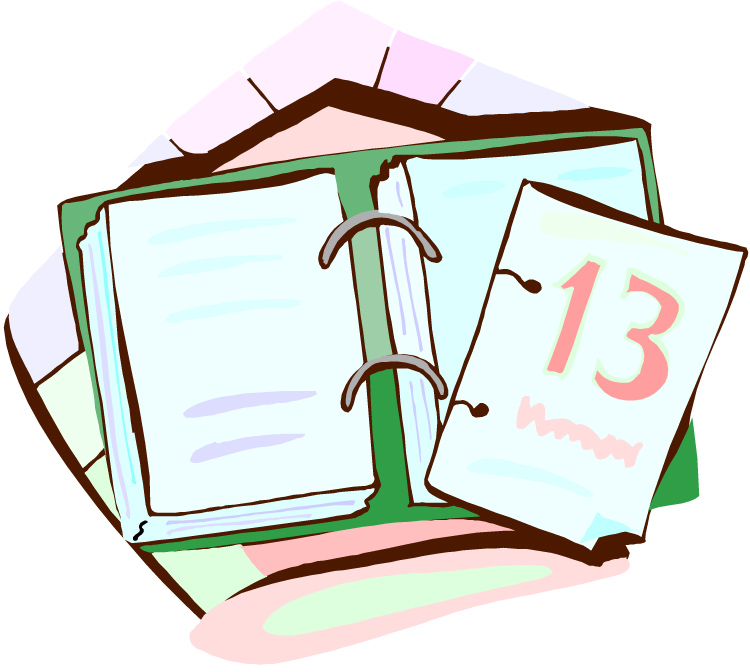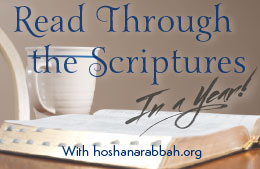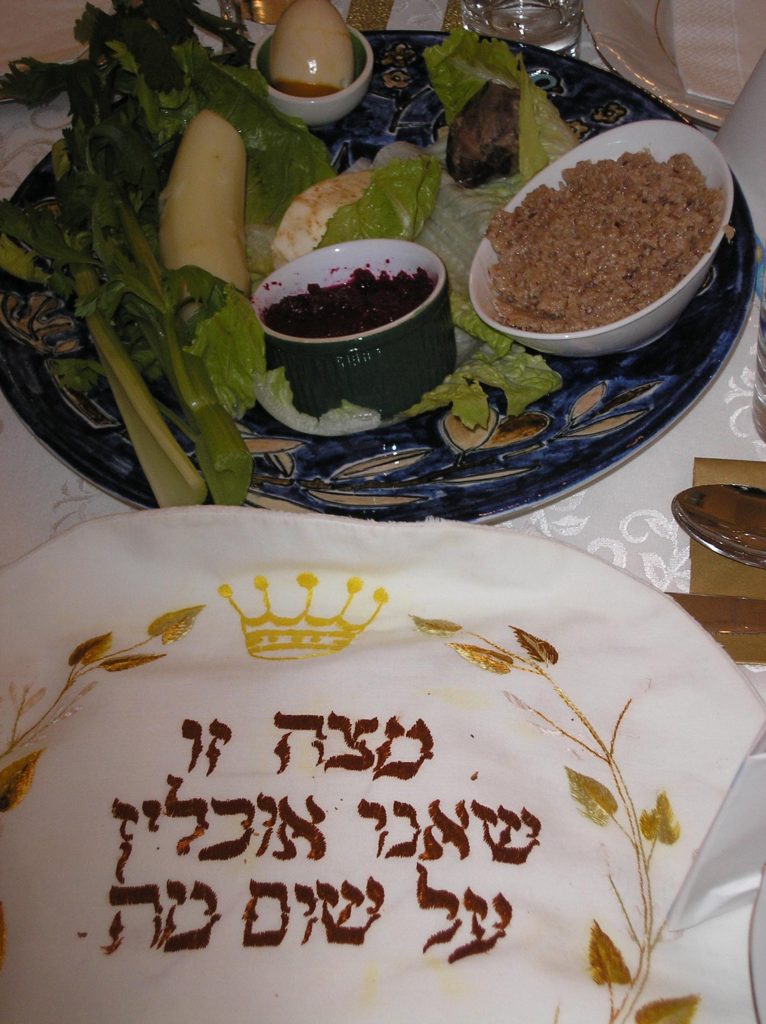Category Archives: Scripture
Elim Online Shabbat and Feast Day Fellowship

For several months now, some of us have been gathering nearly each Shabbat for prayer, praise reports, Bible study and discussion, and teachings by Nathan and others. We call our fellowship Congregation Elim Online. If you would like to join us, please send an email request either to Donna Nash at DonnaNash61@yahoo.com or Nathan Lawrence at Natan@HoshanaRabbah.org.
We will also be gathering tomorrow, Monday, April 18 at 2:30 U.S. Eastern Time to fulfill the biblical command to gather on YHVH’s high holy today. Tomorrow is the first day of the biblical Feast for Unleavened Bread.
Hope to see you there.
Bible Reading Schedule and Calendar Finally Available

After several months, Hoshana Rabbah’s computer problem is finally fixed, and yesterday, Sandi fixed the link to the current Bible reading schedule and uploaded April’s calendar. The next several months will follow shortly. Here are the links:
Bible reading schedule for 2021–2022: https://www.hoshanarabbah.org/pdfs/read-bible-in-a-year-2021-2022.pdf
April’s biblical calendar: https://www.hoshanarabbah.org/calendars.html (May and June will be posted shortly).

How to Prepare YOURSELF for Passover

Passover (Heb. Pesach) is just around the corner and it is time to start preparing physically and spiritually. Pesach is the first step in YHVH Elohim’s plan of salvation or redemption to reconcile sinful man back to him. It is the first of seven steps in YHVH’s step-by-step plan of salvation as symbolized by the seven biblical feasts. Did you ever wonder how this amazing step-by-step process really works? Let’s now find out.
There is never a better time to begin repenting of sin and getting under the blood of the Lamb of Elohim than just before Passover. As the children of Israel applied the lamb’s blood to the door posts and lintels of their house, in a similar fashion but on a spiritual level, Scripture instructs the saints to apply the sin-cleansing and Satan-defeating blood of Yeshua afresh to their lives (i.e., to our thoughts as represented by the door lintel and to our hands or actions as represented by the door posts). Cleansing of our sin occurs as we repent of our sins, and pray for and receive YHVH’s forgiveness. Our loving and forgiving Father in heaven will then cover over and wash away our sins by Yeshua’s blood (1 John 1:9; Rev 1:5).
In Egypt at the first Passover, YHVH judged all those who failed to put the lamb’s blood on the door posts of their houses. In other words, they weren’t under the blood of the lamb, but were still under the death penalty for the sins they had committed, since the wages sin is death (Ezek 18:4; Rom 6:23). Any unrepented of sin in our lives brings the curse of death on us. To the degree that we have sin in our lives is the degree to which the spirit of death has a legal claim on us. Now is the time to repent of sin by confessing it and seeking Elohim’s forgiveness under the blood of Yeshua, and then forsaking that sin through YHVH’s grace or divine empowerment (1 John 1:9).
Let us now discover the miraculous process of how to overcome sin in more detail through a spiritual magnifying glass. How do we go from being a lost sinner—the walking damned or the living dead—to becoming the glorified and immortalized children of Elohim?
It works like this: When we confess and repent of our sins, Yeshua will pass over or forgive us of our past sins (Rom 3:25; Ps 103:8–12). From this point forward, it is up to us to embrace a new mindset and a new spiritual identity and reality; that is, we must reckon our old sinful man as having been crucified with Yeshua, in that we are now dead to sin, no longer slaves to sin, freed from the power of sin, and alive to Elohim in Yeshua our Lord (Rom 6:7–11). Yeshua is the one who victoriously defeated the power or sting of sin, which is death, hell and the grave at the cross and through his resurrection (1 Cor 15:56–57; Col 2:13–15). Through our faith in him and our legal identification with his death, burial and resurrection through the symbolic ritual of baptism for the remission of sins, his victory is legally applied to us by the courts of heaven, which is how he has made us more than conquerors over sin and death (Rom 8:37; 6:1–14), such that the power of sin and death will no longer have dominion over us (Rom 6:12–14). He now gives us strength through his enabling and empowering grace, the miraculous work of his Spirit in us and by the washing of the water of his word to resist and overcome sin, that is, to not allow sin (that is, the violation of his Torah-commands) to control us any longer (Rom 6:12). He promises to give us a new, circumcised heart as he writes his laws or commandments on our hearts, so that we will be supernaturally inclined to love him by keeping his commandments (Jer 31:33; 24:7; Heb 8:10; 10:16; Ezek 36:25–27; Isa 51:7; Ps 40:8; 37:31; Deut 30:6; John 14:12 cp. Rom 7:22). What is that supernatural power that works in us to help keep us from sinning? It the Spirit of Elohim or the Comforter that Yeshua promised would come along side of us to aid us in the process of overcoming sin (John 14:16–18, 25–26; 15:26–27; 16:7–14).
To summarize, this whole supernatural and miraculous process of being victorious over sin is activated when we first acknowledge our sin, confess our sin, repent of our sin and then place our faith in Yeshua’s death and burial. This occurs when we appropriate or reckon, by faith, our old sinful man to have been crucified with Yeshua, and then been resurrected in the newness of spiritual life with him. We now embrace the new identity that he has given us—a spiritual reality that he has imparted to us and has been legally recorded in heaven (Col 2:14)—that we are a new creation and are victorious over sin (Gal 2:20; 2 Cor 5:17), and have become Spirit-begotten children of Elohim. This whole process is summarized from beginning to end in Paul’s Epistle to the Romans chapters six through eight. The end result, if we continue in a right spiritual relationship with Yeshua the Messiah for the rest of our lives, is that our names will be recorded in Elohim’s Book of Life, and our physical bodies will be glorified—we will be given immortality—at the resurrection of the righteous dead, which occurs at the second coming of Yeshua.
This whole glorious salvation process and chain of events that transforms sinful humans into glorified and immortal children of Elohim begins at Passover which symbolizes the first steps a person takes when he comes to faith in Yeshua the Messiah and begins to live as a saint, a set-apart or holy child of Elohim and to walk the upward path of the righteous redeemed of Yeshua the Messiah.
Here are some things of which to repent:
Continue readingWhy Celebrate the Passover?

Isn’t your life already busy enough? Who has time for a six-hour Passover Sedercommemorating something that happened thousands of years ago? What could this possibly have to do with my life here and now, you may ask? How can a 3500-year-old Biblical ritual in any way relate to those living in the age of the laser, satellites, the worldwide web and computers? Well, let’s see!
The Preacher said in Ecclesiastes 3:15, “That which is has been already and that which will be has already been.…” Life is full of paradoxes. Do advancements in technology, science, economics, medicine, religion, and world government really promise to give men the rest for their weary souls for which they long?
How about a different approach to the questions and problems facing modern man? Is it possible to go forward by going backwards? This is a thesis that the ancient prophet Yermeyahu (Jeremiah) proffered to those who had ears to hear. He said, “Thus says YHVH, ‘Stand by the ways and see and ask for the ancient paths, where the good way is, and walk in it; and you will find rest for your souls. But they said, we will not walk in it’” (Jer 6:16). What were those ancient paths to which this white-haired Jewish prophet referred? This question is answered three verses later: “Because they have not listened to My words, and as for My Torah, they have rejected it also” (verse 19). YHVH through his prophets has been showing men the way of rest for their souls for thousands of years, yet men consistently refuse to listen. They always have a better way, so it seems!
The festival of Passover is one of the most ancient paths to be found in all of the Scriptures. In it are contained clues that will help the partakers of it to understand the past, present and the future.
A God-hater, Karl Marx, the father of modern communism, said that religion is the opiate of the masses. Yes, this can be said of dead, truthless and spiritless religion. But how about that religion which gives definition, purpose, meaning, hope and destiny to a man’s life? How could anything that comes directly from the Loving Father who created you and me in his own image be detrimental to us?
It has been said that the religion of the Bible tells a person where he has come from, where he is at and where he is going. Could it not be said that a man who knows the answers to these questions possesses true wisdom and wealth, and has indeed found rest for his troubled soul?
One of the most important scriptures in the Jewish faith is the famous shemapassage of Deuteronomy 6:4–9. This passage, which is like a “pledge of allegiance” for the Jews, starts out by saying, “Hear [shema], O Israel …” The word shema literally means “to hear and to do.” Later, in verse five, the shema continues, “And you shall love YHVH your Elohim with all your heart, and with all your soul and with all your might.” Loving our Heavenly Creator is not just a mind-thing, but also an action and a doing thing. It is something we act out and participate in. This is the Hebrew way … the ancient paths! As a path is for the purpose of walking down, even so, Passover is meant to be celebrated. This is how YHVH’s people showed their love and devotion to him. Yeshua, the Jewish Messiah, reiterated this when he said, “If you love me, keep my commandments [or Torah mitzvot]” (John 14:15).

This is what the Passover Seder is all about. We, as humans, learn by doing. We learn obedience by obeying. We learn to love by loving. We learn about heavenly and spiritual mysteries by walking out the types and shadows found in Scripture (of which Passover is but one) that point to the heavenly and spiritual domain or dimension of YHVH himself. The French have a saying: L’appétit vient en mangeant. Translated this means: Appetite comes while eating. Or we could say that the more one eats (delicious food) the more one wants. David said in Psalm 34:8, “O taste and see that YHVH is good: blessed is the man that trusts in him.” The more we walk out the commandments of our Heavenly Father, the more of his goodness we behold, the more of his blessings we receive, the more our soul finds rest, the more we want to walk out his commandments, the more we behold his goodness, and so on goes this wonderful spiritual growth-cycle.
Continue readingFree Passover Resources from Hoshana Rabbah

- Articles by Natan on the biblical feasts and biblical calendar: https://www.hoshanarabbah.org/teaching.html#feast
- Free resources on celebrating Passover (Pesach) and the Feast of Unleavened Bread (Chag haMatzot): https://www.hoshanarabbah.org/pesach.html and https://www.hoshanarabbah.org/pesach.html#pesach_prep (including a downloadable Passover seder haggadah or order of service)
- Videos by Natan on the biblical feasts: https://www.hoshanarabbah.org/pesach.html#pesach_prep (including Passover, the Passover seder, the Feast of Unleavened Bread, Yeshua in the Passover and much more)

Highlights From Nathan and Sandi’s Vacation in America’s Wild West

For the better part of the past two weeks, Nathan, Sandi along with Jared their son have been making a long road trip through seven western American states. The main purpose was to deliver Zulu the dog to their daughter Kaeli who works as a clinical therapist at a Christian youth ranch that helps troubled and abused teens and pre-teen boys and girls that is located near Minot, North Dakota, located about 1,268 miles and several states away from them. After that, they turned the rest of their trip into a vacation—their first real vacation in more than a year.
After two years of intensive training, Zulu has been become certified to be a resident therapy dog. For the past five months Zulu has lived with us, and Sandi has helped to finish his training program. She volunteers for an organization that raises dogs and trains them from puppies to help people with physical disabilities and those who are suffering from PTSD. The dogs live with us for awhile as part of their training program. During this time, they are taught some 95 commands and learn how to help people with special physical and psycho-emotional needs.
After delivering Zulu to Kaeli, his new owner, we spent a few days with Kaeli and Ryan, her husband, and then we headed off to visit some of YHVH’s natural wonders in the western U.S.A. as we slowly headed our way back to Oregon, our home state.
Sandi and I are especially keen of YHVH’s natural beauty and wildlife. The typical city-type tourist attractions hold little or no interest to us. However, we passionately enjoy, no revel, in the earth’s scenic wonders, and we love to learn about the history and culture of the areas through which we travel.
During this trip, we will have traveled some 3,200 to 3,500 miles geeking out on things such as deer, buffalos, wild turkeys, antelopes, eagles, elk, mountain goats, mountain sheep, magpies and more. We’ve also seen some amazing geological formations, petrified trees, cactuses, spectacular mountains, cloud formations, forests, rivers, amazing geothermal features and too many other things to mention. We’ve been through wind storms that almost blew our car off the road as well as several snow storms as we crossed many mountains and praises as wall as the highest mountain in the U.S. The road in front of our car has, at times, been blocked by flocks of wild turkeys, and herds of elk, deer and buffalo. I could go on and on.
In the mean time, Sandi and I have been able to spend quality time together away from the stressors of everyday life including work and the noise of the city. We’ve also been able to spend quality time with our youngest child and traveling companion, as well as with our daughter and her husband.
Praise Yah for these blessings!
Please enjoy a few of the photos that I took along the way.





















